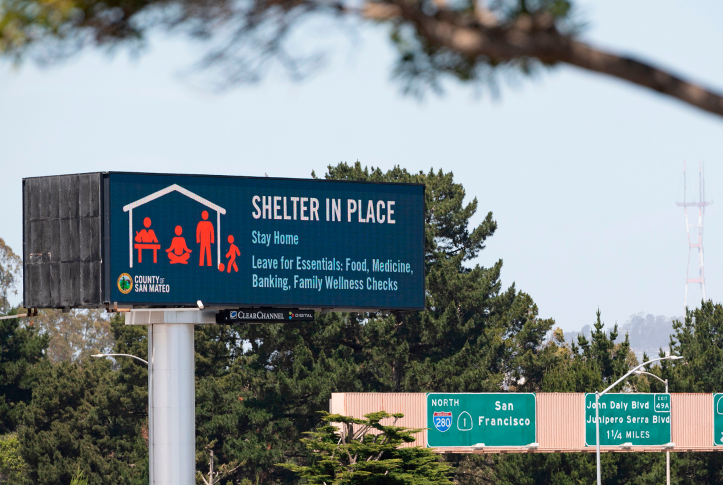These liberty trade-offs were intensely contested, but ultimately most legislatures updated their laws in the early 2000s to expand officials’ powers and reflect courts’ contemporary understandings of individuals’ constitutional rights to procedural due process. But the modernization process was not done with a global pandemic in mind. Legal reformers didn’t anticipate the scale, diversity, and duration of the health orders made during COVID-19. Most laws don’t explicitly say, for example, that countywide stay-at-home orders are permissible. And the procedural protections they envisioned for individuals, like court hearings, aren’t suitable for quickly addressing grievances of entire communities.
As the pandemic wore on, public sentiment around the need for less burdensome restrictions and more protections for personal liberties began to grow. Preexisting political polarization and the politicization of the pandemic set the stage for such concerns to trigger backlash to the broader public health system and to government intervention.
In addition to protest and noncompliance with health orders, this backlash has taken the form of efforts to challenge and reduce the scope of public health legal powers. More than 1,000 court decisions have been issued in lawsuits challenging COVID-19 orders, resulting in rulings limiting federal, state, and local health authorities’ ability to implement important disease-control measures. Nearly 200 laws have been adopted in states curtailing health officials’ powers during or outside emergencies. For example, Montana no longer allows its governor to renew an emergency declaration; only the legislature may do so. Florida limits local health orders to seven days and requires local officials to show that a narrower policy would not suffice.
These efforts to curtail public health legal powers represent dangerous overreach. Many of them hollow out essential powers and threaten states’ ability to mount an effective response to future emergencies. But they have something important to teach policymakers: the balance between individual liberty and public health powers struck after 9/11 is neither appropriate for a prolonged global pandemic nor acceptable to a substantial segment of the American public. It’s time to rebalance.
Congress’s upcoming deliberations on the reauthorization of the Pandemic and All-Hazards Preparedness Act and ongoing debates in state legislatures about bills curtailing public health powers are important opportunities to implement carefully calibrated reforms. As described more fully in a recent Health Affairs article, to address concerns, states should consider:
- Creating meaningful, but moderate, ways for legislatures to modify exercises of executive powers. Rather than striking down entire emergency declarations (which not only permit a range of health orders to be issued, but also unlock critical pots of money and regulatory waivers to allow health care facilities to surge capacity), legislatures should be able to strike particular health orders — after they’ve been in place three to four months.
- Creating formal mechanisms for executive officials to obtain input and feedback from legislators and the public. Right now, executive officials may elicit input, but don’t have to and often get it in forums like town hall meetings that aren’t constructive. Effective consultation processes can increase trust and ensure officials hear the perspectives of important stakeholders. To extend health orders beyond three to four months, laws should require meetings with groups of legislators and public advisory bodies.
- Setting forth substantive standards that executive officials and legislators must demonstrate their emergency response policies meet. Policymakers should have to explain why imposing — or striking — health orders is reasonably necessary to advance a compelling government interest.
- Creating an expedited process for challenging orders that affect a class of people rather than an individual or small group of people. An example is a stay-at-home order limiting the movement of everyone in the county or restrictions on the number of people who may gather in one place.
These accountability-enhancing measures should be counterbalanced by reforms to address areas where state and federal officials don’t have enough powers. Several Modernization 2.0 reforms will pay dividends in the next pandemic. The laws should:
- Clarify that officials can issue stay-at-home orders and community-wide business closure orders, when reasonably necessary.
- Clarify that health agencies can issue rules protecting health in settings that other agencies also regulate, like schools and workplaces.
- Allow local officials to adopt health orders that are more protective than state policies. This recommendation bucks the current trend of strengthening state preemption of local health policies, but it’s important: it gives communities power to protect themselves when governors or legislators find it politically expedient not to act on a public health threat.
- Expand federal powers to collect information and impose necessary disease mitigation measures in areas where the federal government has jurisdiction. Attaching conditions to federal spending for public health data systems, for example, can help ensure that states report vital data on disease burden to the Centers for Disease Control and Prevention (CDC). Amending the Public Health Service Act of 1944 to clarify that the CDC’s quarantine power isn’t limited to the specific tasks listed in the Act, such as “fumigation” and “inspection,” will avoid legal battles over whether the agency can institute reasonable disease control measures for mass transit and other important settings.





